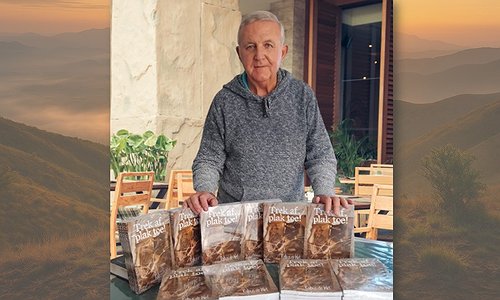Dreamer, drifter, deluded genius: the curious case of Tom McLachlan

History tends to remember the victors, those who struck gold, built empires, or left behind grand legacies. Yet in the rugged hills of Barberton, one man stands out not for his success, but for his unshakable belief in a dream that never quite materialised. His name was Tom McLachlan, an amateur engineer, self-proclaimed prospector, and by all accounts, a man ahead of his time... or perhaps simply out of step with it.
Not many people may know about this interesting prospector and the great influence he had on the discovery of gold in Barberton.
McLachlan arrived in Barberton during the height of the gold rush in the 1880s. Like thousands of others, he came chasing the promise of instant wealth buried somewhere beneath the Makhonjwa Mountains. But while many tried their luck with rudimentary picks and pans, McLachlan had loftier ideas.
He believed he could outsmart the mountain with science and innovation. Without formal training but armed with confidence and hand-drawn plans, he began work on a series of ambitious mining contraptions. Locals recall crude but elaborate designs. One was a modified rock-crushing machine powered by a converted bicycle frame, another a water-purification system supposedly able to separate gold from river silt. But, none of them worked.
Undeterred, McLachlan poured his limited resources into ever more bizarre inventions. He wrote lengthy letters to newspapers and mining authorities, describing undiscovered reefs and hidden veins of ore that he claimed to have triangulated using stars, topography, and instinct. In one now-lost letter, he insisted that a magnetic anomaly in the hills near Moodie’s Rest was “proof of God’s vault of treasure.”
Many dismissed him as a madman. Others, particularly newcomers to Barberton, saw him as a local oddity, someone worth buying a beer just to hear his latest theory. His reputation grew, not as a miner, but as a kind of wandering prophet of gold. Some found him tragic, others hilarious. Children mimicked his wild gestures. Old-timers shook their heads, half in pity, half in admiration.
And yet, there’s something enduring about the figure of Tom McLachlan. He represents the other side of the Barberton gold story, the vast majority of diggers who never found a nugget, who died poor but hopeful, who gambled everything on the shimmer of a dream. His life reminds us that the gold rush was not only about fortunes made, but about the many lives shaped by the hope of fortune.
A few of McLachlan’s rusted tools and faded notebooks are said to be housed in the Barberton Museum’s archives, though rarely displayed. His grave, unmarked and somewhere near the edge of town, remains a quiet footnote to the town’s dramatic history, but his story deserves more than a footnote. In his failures, we find a peculiar kind of heroism, the courage to chase something invisible, to build impossible machines, and to keep believing when the mountain gives nothing back.




